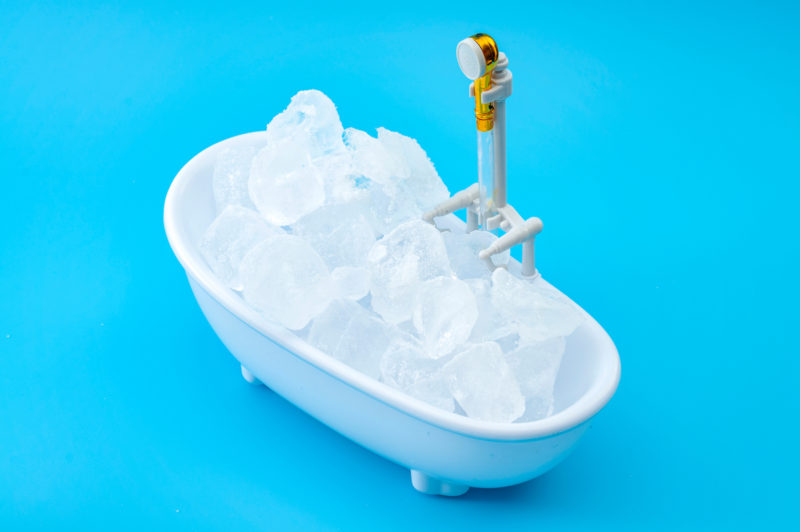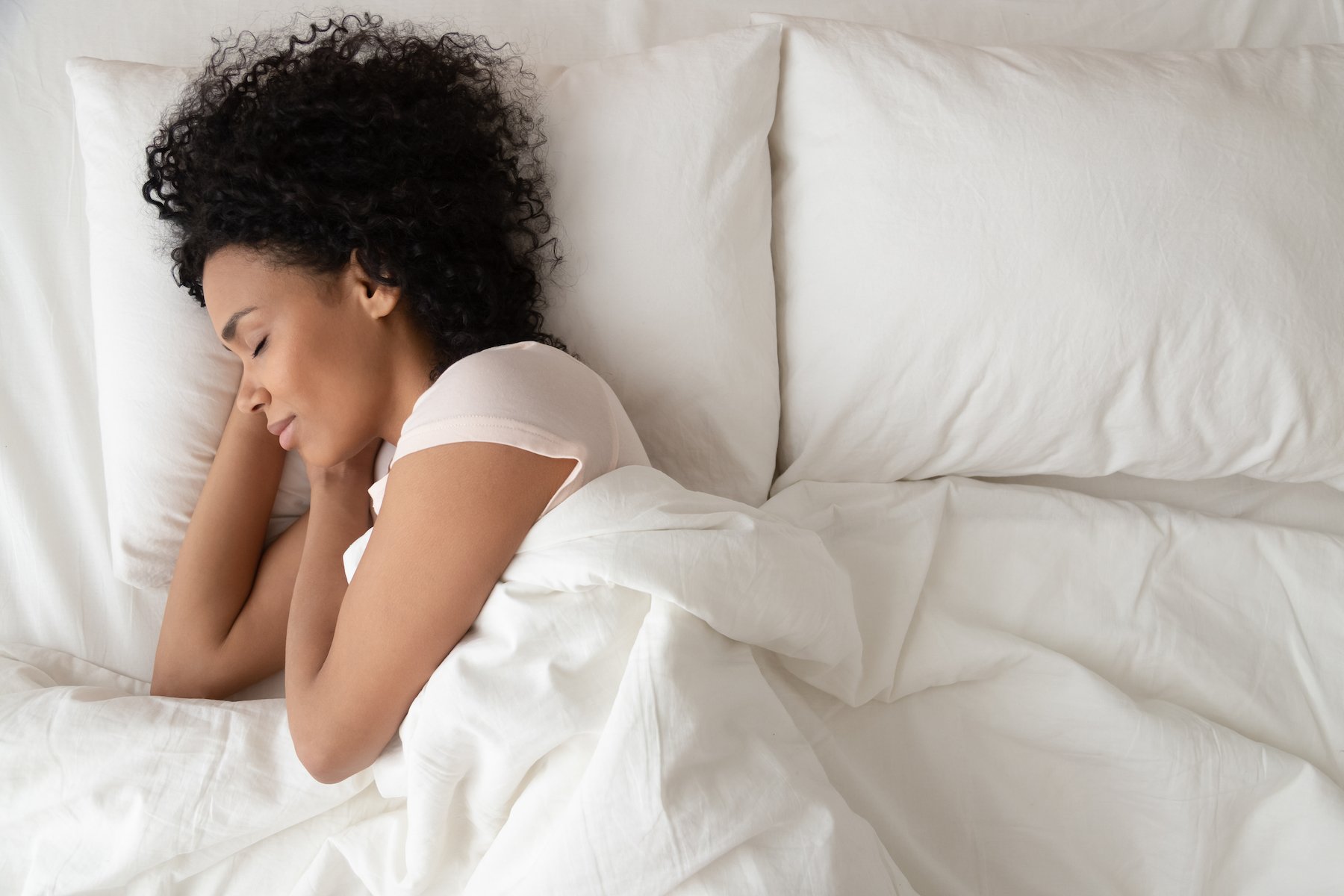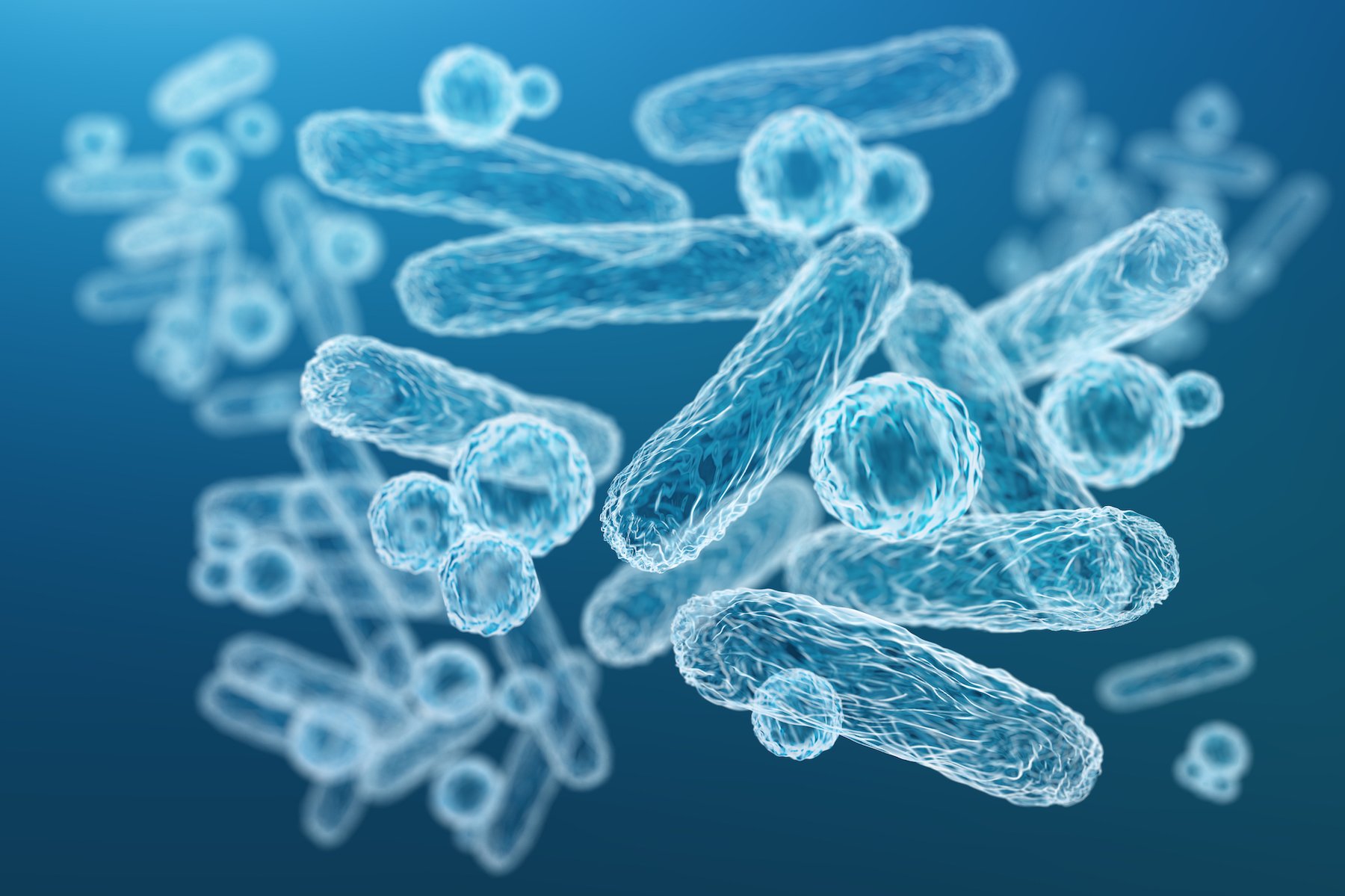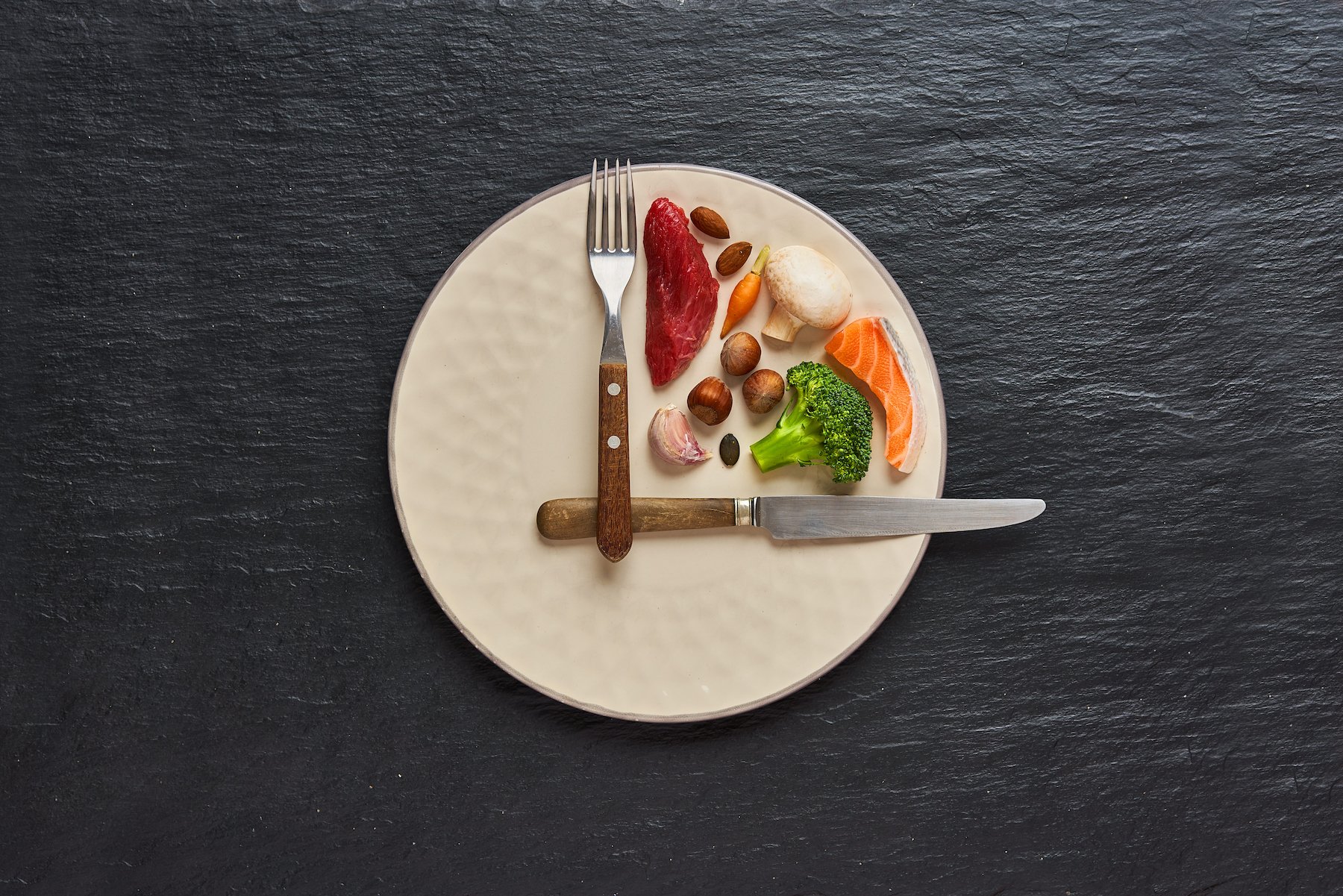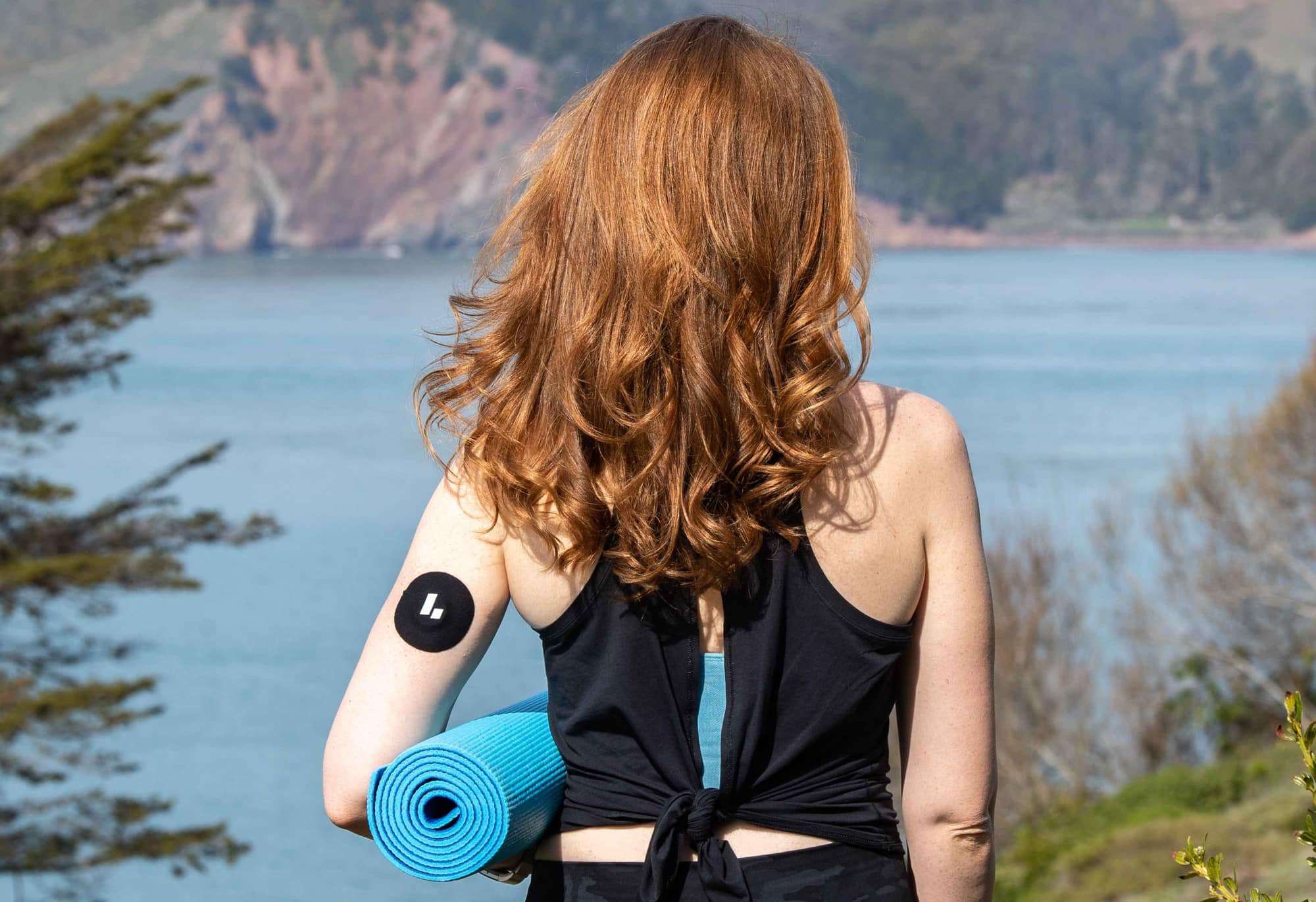The idea of making yourself cold to improve health—with an ice bath, cold air, or dip in an icy lake—has been around for centuries. But in the past decade, research suggests there may be more benefits of cold exposure than we thought, like increased glucose uptake and improved insulin sensitivity.
The basic idea is that when we expose our bodies to cold temperatures, they have to work harder and expend more energy to stay warm. This kicks off a complex process involving our fight-or-flight sympathetic nervous system and many other effects—most familiar to you might be shivering. But another effect appears to be metabolic, mainly through a special kind of metabolically active body fat known as brown adipose tissue, or brown fat.
And while multiple studies highlight the mechanisms by which brown fat may improve metabolic health, research hasn’t yet determined who can benefit from the effects of cold exposure and exactly how. In short, it appears that not everyone has brown fat, but we may be able to create more of it with cold exposure. Also, gradual cold may do the trick, meaning you may not need to jump in an ice bath to see results. So turn that thermostat down a few degrees and read on to see what we know so far.
The Physiology of Cold Exposure
Therapeutic cold exposure spans short immersions in icy baths or showers, applying cold packs or cooling blankets to specific areas of the body, or simply lowering the ambient temperature on the thermostat (without adding extra layers).
Cold-water “hydropathy” was touted as a cure-all in the 19th century, and in modern times athletes incorporate ice into recovery methods for training. Cold exposure combined with specific breathing techniques may even be able to activate your immune system, according to this study testing the methods of cold guru Wim Hof.
All of these therapies play on a feature of our bodies (and the bodies of all warm-blooded creatures) called adaptive thermogenesis: an interconnected series of physiological responses meant to maintain our core at an ideal temperature so our bodies can function correctly.
One factor in thermogenesis is insulation. That includes the layer of subcutaneous white fat that acts like a blanket. There’s also vasoconstriction: If you step outside on a cold day without gloves, you might notice your hands very quickly feel icy to the touch. Blood vessels in your extremities and near the surface of your exposed skin constrict, so less heat from your warm blood can dissipate into the environment. In short, your body will sacrifice your fingers to keep your organs warm.
“Exposure to cold stimulates the sympathetic nervous system, which causes brown fat to activate and take up large amounts of free fatty acids and glucose from the bloodstream.”
If you’re outside in the cold for too long, your body employs a heat-generating technique, shivering, which creates warmth from small involuntary muscle contractions. But shivering is a pretty inefficient way to keep the body warm. “It doesn’t give you a whole lot of heat for the number of calories it burns,” says Cara Ocobock, PhD, an assistant professor and the director of the Human Energetics Laboratory at the University of Notre Dame. It also decreases our coordination, and it’s just uncomfortable.
In between insulation and shivering, the body can turn on a third response: non-shivering thermogenesis. Scientists weren’t sure adult human bodies could have this response until about a decade ago when they started researching more deeply the material needed to generate it: brown fat.
The Role of Brown Fat
Brown fat helps small mammals like squirrels, hamsters, and bats—whose high surface-area-to-volume ratio means they can lose heat easily—maintain core body temperature during cold periods, especially during and around points of emerging from hibernation. While white fat serves to store energy and insulate the body, brown fat acts as a kind of furnace, helping generate heat inside the body when necessary to maintain warmth in cold environments.
Interestingly, in large mammals like humans, we don’t see much brown fat in adults. Instead, it’s primarily found in babies, who don’t have the muscle mass to generate sufficient heat through shivering, explains Dr. Thomas Holland, a physician-scientist in the departments of internal medicine and clinical nutrition at Rush Medical College in Chicago. So babies are born with heat-generating brown fat around their shoulders and upper back, which helps them stay warm. Adults lose much of this brown fat, Holland says, because they develop other ways to retain body heat, like physically moving to warmer spaces, putting on more clothes, and shivering thermogenesis, an autonomic response to maintain homeostasis.
Although scientists have recently found that brown fat can persist in the body through adulthood, not everyone seems to have it. A 2021 retrospective study on the PET-CT scans of more than 50,000 cancer patients found brown fat in about 14 percent of women versus about 5 percent of men. The PET scans showed that brown fat occurred mainly in the neck and shoulders and less in the abdomen. The presence of brown fat decreased with age and was more likely to be found during colder months.
Even those without detectable brown fat may not be out of luck. Regular cold exposure can produce hormonal reactions that cause brown fat cells to emerge in white fat, in a process called “beiging.” For that reason, Dr. Francesco Celi, chair of the division of endocrinology, diabetes, and metabolism at the Virginia Commonwealth University School of Medicine, prefers the terms thermogenic and non-thermogenic fat rather than the binary of brown and white.
How Brown Fat Makes Heat: Non-Shivering Thermogenesis
Non-shivering thermogenesis is the process by which brown fat produces heat to warm our bodies. Exposure to cold stimulates the sympathetic nervous system, which causes brown fat to activate and take up large amounts of free fatty acids and glucose from the bloodstream. What’s unique about brown fat is how it uses those substrates to generate heat in its mitochondria, thanks to a special protein called uncoupling protein 1 (UCP1).
The “uncoupling” in UCP1 refers to how the protein effectively changes mitochondrial processes from producing chemical energy (ATP)—which is what mitochondria traditionally do—to producing heat. Typically, mitochondria create a proton gradient to drive a chemical reaction that creates ATP. UCP1 acts as a channel that thwarts this gradient, subverting the current that normally drives ATP production in the cell. The movement of protons through this alternate channel creates a “proton leak” in the inner membrane of the mitochondria, so energy dissipates out as heat rather than stored ATP.
In addition to having a high density of mitochondria, brown fat also has a lot of nerves, which allows for quick activation, and is “highly vascularized,” which allows for the heat generated to efficiently travel out of the brown fat to the rest of the body.
How Cold Impacts Metabolic Health
The studies that initially “rediscovered” brown fat in 2009 found that its presence was correlated with leaner body mass and lower glucose levels, though researchers at the time weren’t sure why. Again, in the 2021 retrospective PET-CT study, the prevalence of Type 2 diabetes in obese people with brown fat was less than half that of obese people without it, about 8 percent versus 20 percent. Several studies have examined the metabolic benefits of brown fat activation:
- A 2014 study led by Dr. Celi tracked five healthy men over four months in temperature-controlled sleeping rooms. After a month of sleeping in a room at 66 degrees Fahrenheit, the men increased their post-meal insulin sensitivity. The researchers suggest a few potential causes of this, including changes to the levels of thyroid hormones T3 and T4 and increased adiponectin, a possible insulin-sensitizing hormone. The men also nearly doubled both the activity and the volume of brown fat present in their bodies, suggesting that cold exposure can increase brown fat. (Note that the volunteers slept in minimal pajamas and only used sheets for cover.) However, after a month of cold-sleeping acclimation, researchers tested the men again in a 75-degree room and saw no decrease in insulin levels. In other words, the metabolic benefits of brown fat activation seem to occur only when you’re actively in a cold environment.
- Another 2014 study looked at shorter duration of cold exposure, examining the effects of five to eight hours of cold-induced non-shivering thermogenesis on seven men with and five men without detectable brown fat. Using cooling vests and blankets set initially at about 68 degrees Fahrenheit, researchers lowered the temperature by one-degree intervals until each subject began to shiver. Then the temperature was raised one degree above that to prevent shivering. The study found that cold exposure increased resting energy expenditure by 15 percent—but only in subjects with brown fat. Whole-body glucose disposal increased about 14 percent after five hours of cold exposure for the brown fat group versus no significant change for the group without brown fat. Whole-body insulin sensitivity likewise improved significantly for subjects with brown fat.
- Even in people with minimal brown fat, cold acclimation can improve glucose disposal and insulin sensitivity. In a 2015 study, eight men with Type 2 diabetes underwent a 10-day cold acclimation protocol: up to six hours a day of exposure to 57-59 degrees Fahrenheit. Researchers measured brown fat activity and insulin sensitivity before and after. Although the cold exposure didn’t appear to significantly increase the amount of thermogenic activity in the men’s white fat (which might suggest “beiging”), it increased activity in their brown fat and a 43 percent improvement in insulin sensitivity compared to their levels under neutral temperatures. Researchers also saw a significant increase in the activity of GLUT-4, a molecule that helps muscle take up glucose. Given these findings, the paper concludes that cold exposure could “provide a new avenue to improve the metabolic health of patients with T2D.”
- We know that cold can stimulate brown fat activity via neurotransmitters (norepinephrine) activated by the sympathetic nervous system, and once activated, brown fat can take up significant amounts of glucose. But a 2016 paper found that brown fat may also modulate glucose variability, taking up glucose independent of cold exposure signaling and helping to maintain stable whole-body glucose. Researchers gave volunteers an oral glucose tolerance test in a comfortable temperature room and found that brown fat activation and resting energy expenditure both rose in response (they saw the same brown fat activation during cold exposure). They also found that higher brown fat seemed to correlate with lower glucose variability.
What We’re Still Learning
How Best to Identify Brown Fat
Imaging technologies like PET and MRI can measure whether you have brown fat that you can activate, according to Crystal Coolbaugh, PhD, a scientific project and program manager at the Vanderbilt University Medical Center offshoot Nashville Biosciences who led an early study using MRI to image brown fat. But these scans are costly, and in the case of PET scans, involve invasive radiation. Researchers have experimented with several other detection methods, including measuring skin temperature with infrared thermography. Still, so far, there are no simple, consumer-available methods for determining your brown fat content.
The Length of Cold Exposure Needed to Activate Brown Fat
Most studies have looked at mild cold exposure over many hours, weeks, or months, but few studies investigated shorter, more intense exposure. A 2019 study in seven healthy young men showed that a week of daily 1-hour cold-water immersion at 57 degrees Fahrenheit lowered shivering by 36 percent—indicating increased non-shivering thermogenesis. Researchers concluded that brown fat activation can play a role in even short-term cold exposure and may be aided by other means of generating heat without shivering.
How Sex Hormones Affect Brown Fat Activation
Human studies on brown fat often use male volunteers because research suggests hormones involved in menstruation can affect body temperature regulation, which could complicate results. A 2020 study showed that women exhibited higher brown fat activation after cold exposure than men, regardless of their menstrual cycle stage, but that brown fat activation was lower during the follicular phase of menstruation when progesterone in women is lower. Higher temperature under the collarbone in response to cold (which the study used as a proxy for brown fat activation) was positively correlated with estradiol levels. No correlation was found with cortisol or testosterone. These findings suggest that sex hormones may also play a role in brown fat regulation.
Should You Make Yourself Cold?
There’s now more than a decade of study on brown fat and non-shivering thermogenesis, and there’s clear evidence that brown fat absorbs a large amount of glucose compared to other tissue.
Holland says large randomized clinical trials should be conducted before drawing any conclusions about cold exposure as a treatment protocol for glucose management. “It’s intriguing because the mechanisms do make sense. It’s just a matter of whether or not the effect is at a high enough level that [cold exposure] would actually make a difference in the body.”
But Celi says that shouldn’t stop you from trying to capture some of the benefits. Lowering the temperature in your house “should be able to give some potentially measurable metabolic improvement,” he says.
Remember, brown fat only affects glucose levels when it’s activated. But if you simply lower your thermostat, you could theoretically keep brown fat switched on all the time. There are also products that regulate your body temperature at night, like Eight Sleep.
Although cold-water immersion has shown that it can quickly increase brown fat activation, gradual acclimation to lower temperatures in your home may be more appealing than cold showers or ice baths. If you want to try adjusting the temperature in your house, Holland suggests lowering the thermostat one degree every week. And don’t pile on the sweaters to compensate; that could cancel out the potential metabolic benefits of non-shivering thermogenesis.
Celi cautions, though, about a potential downside to lowering the thermostat: “If it causes massive fights with your partner, you need to make a cost-benefit analysis.”
